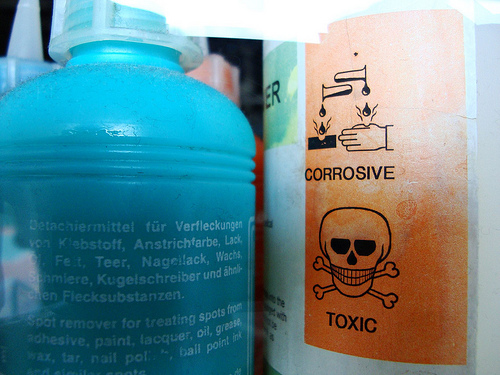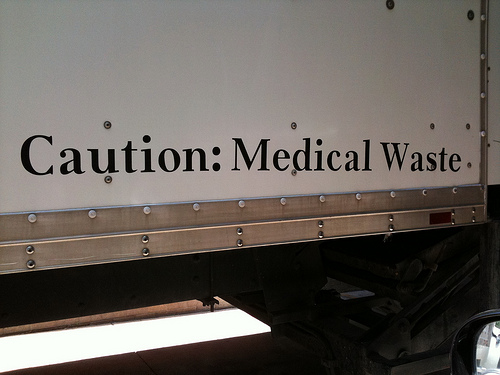Although the pace of fracking projects rises and falls with changes in oil prices, regulation of fracking develops at slower and steadier rates. This month, the U.S. Bureau of Land Management (BLM) has completed nearly five years of rulemaking by revising its rules for oil and gas production from federal and Indian lands, to add requirements for hydraulic fracturing projects. These rules update and expand drilling permit rules in place for three decades. BLM reports that production from over 100,000 onshore oil and gas wells on federally-managed land accounts for 11 percent of U.S. natural gas supply and five percent of its oil, and that over 90% of wells currently being drilled on these land involve hydraulic fracturing.
Audit, Compliance and Risk Blog
Jon Elliott
Recent Posts
Tags: Environmental risks, Environmental, EHS, EPA, Greenhouse Gas, fracking, hydraulic fracking
Hazardous Chemicals: Toxic Substances Control Act (TSCA) Approaches 40, Part 2
Posted by Jon Elliott on Wed, Mar 25, 2015
My most recent blog provided a short summary of chemical evaluation and reporting requirements under the Toxic Substances Control Act (TSCA) of 1976. These requirements apply when a manufacturer or importer is preparing to introduce a “new chemical substance” into commerce in the U.S., to provide the Environmental Protection Agency (EPA) with information to evaluate whether chemical hazards require regulatory restrictions (up to and including outright bans) to provide adequate protections to human health and the environment. TSCA does not include any blanket requirement for ongoing studies or updated evaluations of an “existing chemical substance” after it has entered commerce—including those already in commerce when TSCA took effect, so some chemicals have never undergone a regulatory review of their hazards.
Tags: Corporate Governance, Business & Legal, Health & Safety, Environmental risks, Environmental, EHS, EPA, Hazcom
Hazardous Chemicals: Toxic Substances Control Act (TSCA) Approaches 40
Posted by Jon Elliott on Thu, Mar 19, 2015
Tags: Health & Safety, Environmental risks, Environmental, EPA, Hazcom
Environmental Compliance: Are You Using Water Efficiently?
Posted by Jon Elliott on Wed, Mar 11, 2015
Although day-to-day environmental regulations tend to focus on water quality, water quantity is also an issue … and can be a critical one. Here in California, we’re experiencing the third year of a drought of historic proportions; our Sierra Nevada snowpack is at 18% of average as winter ends. As the drought continues, state and local agencies are taking stronger and stronger measures to limit water use. The State Water Resources Control Board SWRCB) has just proposed to expand emergency regulations adopted in July 2014.
Tags: Corporate Governance, California Legislation, Environmental risks, Environmental, EHS, EPA
Although it’s been in the 70’s here in California, employers in most parts of the continent should be worrying about protecting workers against the extremely cold weather. Occupational safety and health regulators include “environmental” hazards as those that may require employers to provide their employees with personal protective equipment (PPE), and employers also bear a “general duty” to protect workers against recognized hazards. These requirements cover potential harm from extreme temperatures including cold. The U.S. Occupational Safety and Health Administration’s (OSHA) PPE standards address cold, and U.S. and Canadian guidelines apply general worker protection principles to "cold stress" hazards.
Tags: Corporate Governance, Business & Legal, Employer Best Practices, Employee Rights, EHS
Have You Completed Your Hazardous Materials Management Plan?
Posted by Jon Elliott on Wed, Feb 25, 2015
A wide variety of federal, state and even local laws apply environmental, health and safety (EH&S) protection requirements to chemicals. EH&S compliance personnel are accustomed to complying with chemical management requirements imposed by the Environmental Protection Agency (EPA), Occupational Safety and Health Administration (OSHA), and their state equivalents.
Tags: Corporate Governance, Health & Safety, OSHA, California Legislation, Environmental risks, Environmental, EPA, Greenhouse Gas, ghg, Hazcom
Expanding Recycling Responsibilities for Specific Solid Wastes
Posted by Jon Elliott on Mon, Feb 23, 2015
Adopted half a century ago, the Solid Waste Disposal Act (SWDA) of 1965 is one of the first federal statutes in the modern era of environmental protection. SWDA focused originally on worries that a “landfill crisis” combined predictions that landfills would soon be too full to provide disposal capacity, and longstanding concerns that poorly designed municipal and industrial landfills might not protect public health. The Environmental Protection Agency (EPA) has applied SWDA authority to adopt landfill standards, which are administered by state and local governments nationwide.
Tags: Corporate Governance, Health & Safety, Environmental risks, Environmental, EPA, Hazcom
The Resource Conservation and Recovery Act (RCRA) and its state counterparts provide requirements to govern hazardous wastes during every step of their management, from “cradle to grave.” Although these rules are intended to improve management and provide incentives for recycling and other beneficial uses of hazardous wastes, many organizations find many of the rules unnecessarily onerous – and therefore potentially counterproductive if they actually discourage beneficial activities. In addition, over time changes in technologies, commercial activities and regulatory priorities reveal gaps in existing rules. In January, the Environmental Protection Agency (EPA) revised its “Definition of Solid Waste” rules governing a number of potentially hazardous wastes that it instead considers to be “hazardous secondary materials”, and the range of recycling and recovery activities eligible for special regulatory considerations. The revisions become effective on July 13, 2015.
Tags: Environmental risks, Environmental, EPA, Hazcom, RCRA
Department of Labor Proposes More Anti-Discrimination Rules For Federal Contractors
Posted by Jon Elliott on Thu, Feb 12, 2015
On January 30, the U.S. Department of Labor’s Office of Federal Contract Compliance Programs (OFCCP) published a proposal to revise its requirements for covered Federal Government contractors and subcontractors, including federally assisted construction contractors and subcontractors. This proposal would implement provisions in Executive Order (EO) Number 13672, which President Obama issued on July 21, 2014 (I blogged about the E.O. here). These revisions expand anti-discrimination responsibilities of federal contractors and federal grant recipients, to cover “sexual orientation” and “gender identity.” Once implemented, employment practices in these workplaces will match private employers’ responsibilities under a growing number of state laws, and under some federal court cases interpreting Title VII of the Civil Rights Act of 1964 (Title VII).
Tags: Corporate Governance, Business & Legal, Employer Best Practices, Employee Rights, EEOC, NLRB, Disability benefits
How do you have to manage waste biological materials generated by your activities—maybe from agricultural or biotech production, or maybe from your onsite clinic or the healthcare facility you run? Worker safety and transportation rules will apply to handling, and environmental protection rules to releases and disposal. But the main regulatory focus is provided by waste management requirements.
Tags: Corporate Governance, Business & Legal, Health & Safety, Environmental










